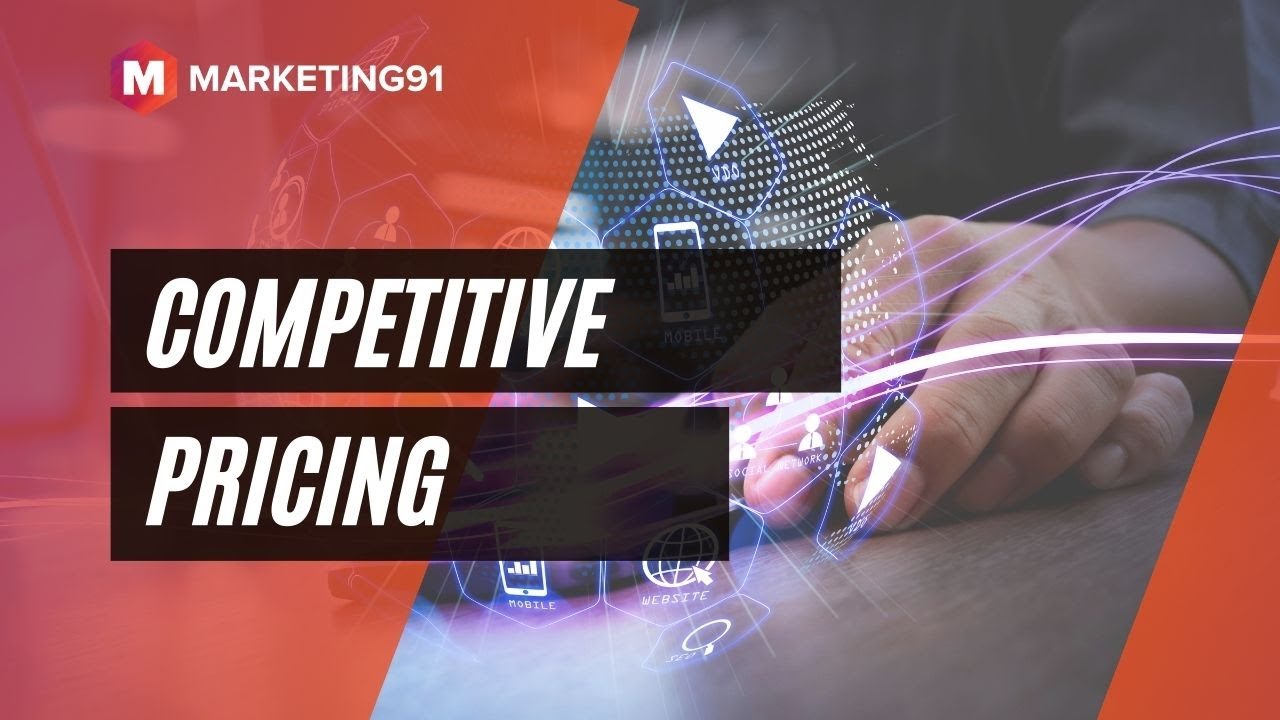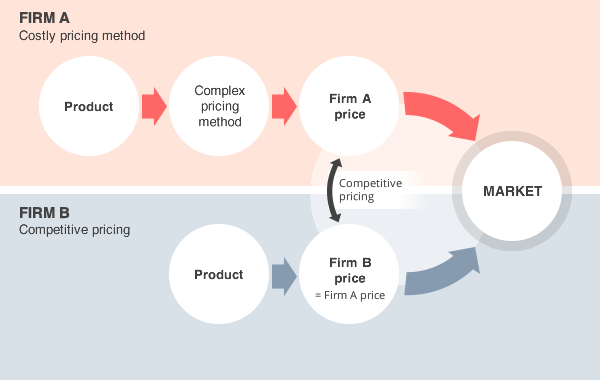Choosing strategic price points to take advantage of a product or service market in relation to competition is the process of implementing competitive pricing.
Businesses that sell similar products are more likely to use this pricing strategy because services can differ from one company to the next while product characteristics remain constant.
In most cases, this pricing strategy is employed when a product or service has been on the market for some time and has a wide range of competitive alternatives available.

Competitive Pricing - Meaning, Strategies, Advantages, and Examples of FedEx and Walmart (Video 226)
Understanding Competitive Pricing
A businesscan set its price below, at, or above the competition when it comes to selling a product or service.
In order to command a higher price than the competition, the company must create conditions that justify the premium, such as longer payment terms or additional features.In order to charge a premium price, the company must compete on quality rather than price.
If a businessbelieves that the customer will purchase additional products from their business once the customer is exposed to the other offerings, it may set the price below the market and take a loss.
As a result, the other products' profits can be used to offset the loss incurred by the low-priced item.
This is also referred to as a "loss leader" strategy by industry professionals.
Last but not least, a company can set its own prices or accept the market price as given.It is possible for a company to market itself despite selling an identical product at an identical price.
Concept And Advantages
When it comes to pricing, competitive pricing is all about comparing one's own prices to those of one's competitors.When it comes to brand, penetration tactics, or market aggressiveness goals for a particular company, there may be some variation in pricing.Having one of the lowest prices on the market, for example, is a common strategy for companies looking to gain market share.When it comes to creating an effective brand image, it's better to sell higher-priced products to convey a quality message to customers rather than lower-priced ones.
In addition, this pricing strategy is frequently employed in well-established markets with fierce competition.
This is because in this type of market, it is assumed that the price equilibrium has already been reached, meaning that competitors have set their prices to the equilibrium price.Because it's easy to understand from a theoretical standpoint and has a low chance of resulting in an inefficient price, this approach can help a business achieve economic equilibrium.
Since competitors' prices are often displayed publicly, this method is simple to use.When products are nearly identical or nearly identical, it is often easier to simply copy the prices of your competitors than to come up with a new pricing strategy.
The company allows its rivals to bear the costs of determining an optimal price.
This is a risk-free method.Competitive pricing will likely lead to similar outcomes for other businesses in the market if it doesn't bankrupt them first.And while this method may cause some short-term inefficiencies (on a single product) that spread to the rest of the market, this is a rare occurrence.
Equilibrium is achieved using this approach.Every day, millions of customers and millions of transactions occur in the retail industry.Therefore, assuming that most retailers on the market are using the competitive pricing method, the equilibrium price of the entire market can be established by the market itself.
With a $25 entry-level model and a $50 high-end model, Company "A" has been selling coffee makers for years.
It took them years of experimentation to arrive at this equilibrium price.
Firm "A" would lose margin if the entry-level product was less expensive, while they would lose market share if it was more expensive.The same can be said for the top-of-the-line espresso machine.
Coffee makers from another company, "B," enter the market, with an entry-level model and a high-end model.
Since firm "A" has already identified the best prices aimed at maximizing their profit and reaching price equilibrium, firm "B" can assume that firm "A" has identified the best prices that firm "B" should use.
It's worth noting that the coffee maker market is well-established, with well-defined consumer preferences.
As depicted in this diagram, competitive pricing allows firm "B" to set prices without incurring any price-setting overhead.
How To Implement A Competitive Pricing Analysis
Determine Quality Of Data
Define Data Parameters
Many retailers believe that the only method of determining competitive pricing is by comparing prices amongst one's own industry's competitors.However, a thorough examination of internal company data (i.e. historical data) as well as information about competitors is required for a competitive price analysis.Price optimization and competitive pricing are impossible without a thorough understanding of the market and your place within it as a retailer.
Categorize Competitors
Defining and classifying competitors could also benefit from a data-driven approach.Retailers who sell only one brand or have a small number of SKUs can probably classify their competitors by hand.With thousands of products available at different price points, the smart competitors' analysis has no substitute for large sellers.
Aside from that, the market for each product is constantly changing due to new competitors and retailers shifting their strategies.This means that, depending on the product or market segment, competitive analysis and categorization are ongoing processes that should be performed more or less frequently.
How To Do A Smart Pricing Analysis- Use Machine-Based Pricing Tools
Retail teams can now focus on strategic tasks related to pricing strategy and price management, which is arguably the most important benefit of implementing automation in pricing processes.
Most retailers are apprehensive about the additional costs of implementing automated pricing systems.Rather than being ways to increase revenue, these are ways to decrease expenses.
Track Competitors’ Online Activity
As a retailer, you should keep an eye on your competitors' websites and social mediaaccounts in order to gain a better sense of the market.
Aside from that, retailers can subscribe to official newsletters and follow their rivals on social media to keep up with the latest trends.Businesses need to know what entices customers to buy products from their competitors.
Conclusion
Creating a competitive pricing strategyfrom the ground up is a difficult task.
Many factors, such as parameters and quality, must be taken into account when dealing with data. Companies must decide whether and to what extent they will automate their pricing process.
Lastly, they must do extensive research into their competitors in order to truly excel in the marketplace.
